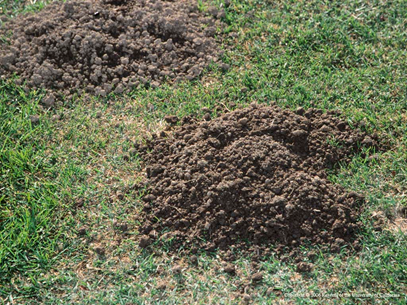Ultimate Bug Control Solutions for Taking On Persistent Gopher Problem Issues
In the world of insect control, gophers offer an one-of-a-kind challenge due to their persistent nature and destructive habits. By checking out a comprehensive strategy that encompasses understanding gopher habits, utilizing specialized capturing techniques, using repellents, and taking on lasting avoidance methods, a path in the direction of efficient gopher management arises.
Comprehending Gopher Habits Patterns
Assessing gopher habits patterns supplies important insights right into their practices and choices, helping in the growth of effective insect control techniques. Recognizing how gophers behave is vital in devising successful bug management strategies.
Gophers are tunneling rodents known for their considerable tunneling tasks. gopher control. By observing their behavior, scientists have actually discovered that gophers are territorial creatures, with each gopher typically occupying its very own passage system. These passage systems serve various functions, including nesting, food storage space, and protection from killers
In addition, gophers display particular feeding patterns, choosing roots, tubers, and various other underground plant parts. By understanding their dietary choices, insect control experts can purposefully bait traps or carry out repellents that target these food resources, effectively lowering gopher populaces.
Moreover, gophers are most active throughout specific times of the day, usually very early morning and late afternoon. This understanding can aid in organizing bug control tasks for optimum performance. Generally, a detailed understanding of gopher habits patterns is important for implementing targeted and reliable bug control procedures.
Efficient Trapping Methods
When dealing with gophers, catches are a humane and efficient method for control. One of the most commonly used catches is the box trap, which catches gophers active so they can be launched in other places. It's crucial to check catches regularly to guarantee trapped gophers do not experience and to eliminate caught gophers without delay.
Using Repellents and Deterrents
To enhance the efficiency of trapping techniques in handling gopher invasions, residential or commercial property owners can explore the application of repellents and deterrents as added devices in their insect control arsenal. Deterrents, on the various other hand, goal to make the environment much less eye-catching to gophers by making use of vibrations or sound to mimic killers or create disruptions that make the area unwelcoming for gophers. When integrating repellents and deterrents right into a parasite control approach, it is essential to adhere to application instructions thoroughly and on a regular basis reapply the items to preserve their effectiveness in discouraging gophers from causing damages to buildings.
Implementing Natural Control Techniques

Gopher traps can be positioned tactically in energetic passages to record and eliminate the parasites. These traps are a humane way to regulate gopher Go Here populaces without resorting to poisonous substance or hazardous chemicals. By incorporating these all-natural control methods, it is possible to efficiently take care of persistent gopher invasions in an environment-friendly manner.
Integrating Long-Term Prevention Techniques
To establish long lasting control over gopher problems, it is vital to integrate proactive procedures that focus on preventing future events. Implementing long-lasting avoidance approaches can dramatically decrease the likelihood of gopher re-infestations. special info One reliable strategy is to mount below ground barriers made from cable mesh or hardware cloth around vulnerable locations like yards or yards. These obstacles work as a physical deterrent, avoiding gophers from burrowing into these spaces. In addition, routinely inspecting and repairing any kind of existing barriers can aid preserve their effectiveness over time.
An additional essential element of long-lasting avoidance is maintaining a well-kept garden or lawn. Gophers are attracted to areas with abundant food sources like light bulbs, origins, and plants. By keeping vegetation well-trimmed and removing excess debris, you can make your residential property much less enticing to gophers. Exercising proper waste administration by disposing of natural materials immediately can assist deter these parasites from taking up residence on your land. By integrating these aggressive actions right into your insect control approach, you can create a hostile environment for gophers, inevitably reducing the likelihood of future infestations.

Final Thought
To conclude, addressing gopher problems needs an extensive method that incorporates trapping strategies, repellents, natural control techniques, and long-lasting avoidance methods. By recognizing gopher behavior patterns and making use of a combination of these options, property owners can effectively take care of consistent infestations and avoid future events. It is necessary to consistently check and maintain these pest control measures to make sure a gopher-free environment.
By discovering a comprehensive strategy that includes understanding gopher actions, employing specialized trapping techniques, utilizing repellents, and embracing long-term index avoidance techniques, a path towards effective gopher management emerges. By observing their actions, researchers have discovered that gophers are territorial creatures, with each gopher generally occupying its very own passage system. It's crucial to check catches often to make sure trapped gophers do not suffer and to get rid of captured gophers immediately. Deterrents, on the other hand, purpose to make the environment much less appealing to gophers by making use of vibrations or sound to simulate predators or develop disturbances that make the location unwelcoming for gophers. Furthermore, growing specific plants that gophers disapproval, such as castor bean plants or gopher spurge, can act as a deterrent.